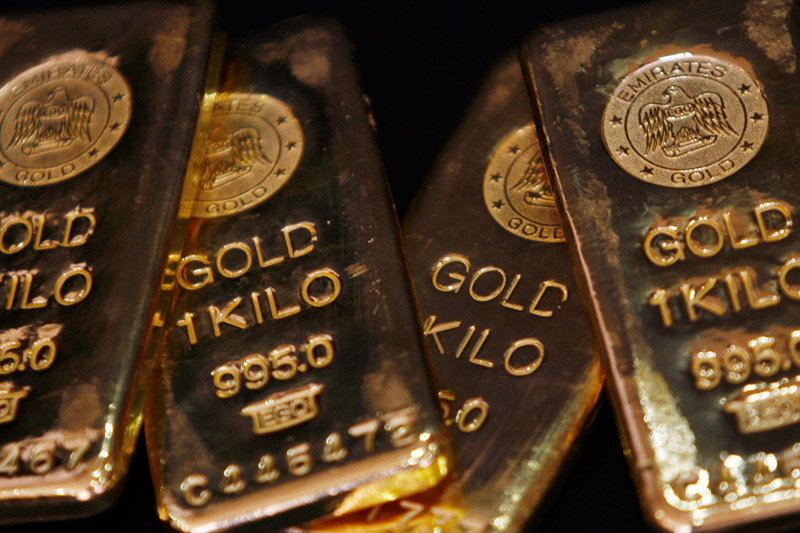Investing.com - Gold prices pushed higher during Europe's session on Thursday, after surprisingly weak Chinese trade data raised fresh concern about the world's second-largest economy.
Gold for December delivery on the Comex division of the New York Mercantile Exchange tacked on $7.05, or 0.56%, to $1,260.95 a troy ounce by 3:10AM ET (07:10GMT). A day earlier, the yellow metal dipped $2.10, or 0.17%.
China's exports tumbled nearly 10% year-on-year in dollar-terms, and imports fell 1.9% from the previous year. In yuan terms, exports dropped 5.6% on-year, while imports rose 2.2%.
That left China with a trade surplus of $41.99 billion for the month, the lowest in six months, the General Administration of Customs said on Thursday.
The weak Chinese trade data triggered a fall in global equities and a drop in the U.S. dollar and gave a lift to both gold and the yen, which are considered safe haven assets that tend to rise in times of market duress.
Against a basket of six major currencies, the dollar last stood at 97.99, having pulled back from a seven-month high of 98.11 set earlier on Thursday.
Meanwhile, minutes of the Federal Reserve's September policy meeting released on Wednesday showed several voting members of the policy committee judged a rate hike would be warranted "relatively soon" if the U.S. economy continued to strengthen.
Markets are currently pricing in around a 65% chance of a rate hike at December's meeting, according to Investing.com's Fed Rate Monitor Tool.
Gold is sensitive to moves in U.S. rates, which lift the opportunity cost of holding non-yielding assets such as bullion.
There are a few economic reports on Thursday, including data on weekly jobless claims and import prices at 8:30AM ET (12:30GMT), while the federal budget is due at 2:00PM ET (18:00GMT).
Also on the Comex, silver futures for December delivery inched up 5.2 cents, or 0.3%, to trade at $17.55 a troy ounce during morning hours in London, while copper futures lost 1.8 cents, or 0.85%, to $2.158 a pound.
China is the world’s largest copper consumer, accounting for nearly 45% of world consumption.
